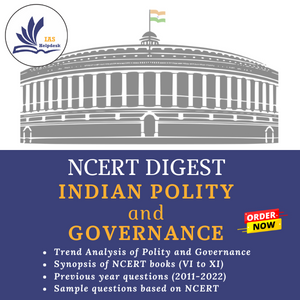Numismatic stages of India
Description
Numismatic Stages of India
Description: Trace the rich history of Indian numismatics through ages - from punch-marked
coins to dynastic symbols, medieval Islamic motifs to British uniformity, and
the contemporary decimal system. Explore the diverse stories engraved on coins
that mirror India's journey.
Ancient India coinage:
• Starting with ‘Punch marked’ coins, this era includes coins attributed to ‘Janapadas’ as well as the ‘Mauryan period’.
• The motifs found on these coins were mostly drawn from nature like the sun, various animal motifs, trees, hills etc. and some were geometrical symbols.
Dynastic Coins:
• These coins relate to those of the Indo-Greeks, the Saka-Pahlavas and the Kushans.
• Hellenistic traditions characterise the silver coins of the Indo-Greeks, with Greek gods and goddesses figuring prominently, apart from the portraits of the issuers.
• The Saka coinage of the Western Kshatrapas are perhaps the earliest dated coins, the dates being given in the Saka era which commences in AD 78.
• Kushans, who hailed from the Central Asian region depicted Oesho (Shiva), moon deity Miro and Buddha in their coinage.
• Earliest Kushan coinage is generally attributed to Vima Kadphises.
• The Kushan coins generally depicted iconographic forms drawn from Greek, Mesopotamian, Zorastrian and Indian mythology.
• Siva, Buddha and Kartikeya were the major Indian deities portrayed.
• This stage also includes coinage from the Gupta, Post-Gupta and South Indian Empires of Cholas, Cheras, Pandyas, Pallavas and Hoysalas among others.
• Gupta coinage (4th-6th centuries AD) followed the tradition of the Kushans, depicting the king on the obverse and a deity on the reverse; the deities were Indian and the legends were in Brahmi.
• The earliest Gupta coins are attributed to Samudragupta, Chandragupta II and Kumaragupta and their coins often commemorate dynastic succession as well as significant socio-political events, like marriage alliances, the horse sacrifice, or for that matter artistic and personal accomplishments of royal members (Lyrist, Archer, Lion-slayer etc.).
Coins of Medieval period:
• With the emergence of Turkish Sultans of Delhi in the 12th Century, existing motifs were gradually replaced by Islamic devices, largely calligraphy. The unit of account came to be consolidated and was referred to as the 'tanka' with the 'jittals' as the smaller value coins.
British Indian Coinage:
• Enactment of Coinage Act of 1835 led uniform coinage with effigies of Prince Willian IV and Queen Victoria. The act was succeeded by Indian Coinage Act of 1906.
Coins of modern India
• The first Rupee coin of Republic of India was minted in 1950.
• Other denominations of coins of modern India were also produced like the 1/2 Re, 1/4 Re, 2 Anna, 1 Anna, 1/2 Anna & 1 Pice coins which are also referred as Anna series or pre-decimal coinage.
• In 1957, India shifted to the decimal system.
• Special coins were minted in memory of important events or personalities. These are referred to as commemorative Indian coins.
• Some of commemorative coins include coins depicting Mahatma Gandhi, Jawaharlal Nehru, Indira Gandhi, B. R. Ambedkar, Rajiv Gandhi, Saint Dnyaneshwar, Sardar Vallabhbhai Patel, Subhas Chandra Bose etc.

